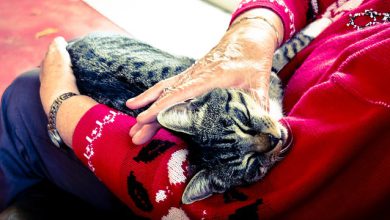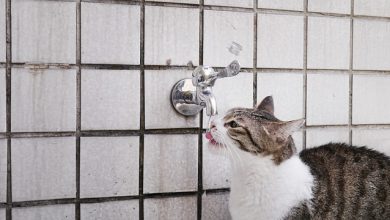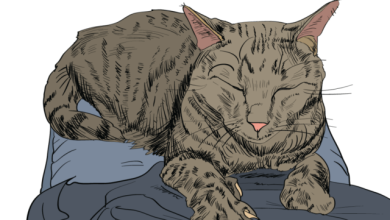
Did you know that February is National Pet Dental Health Month? Did you also know…
- The number one health issue facing cats today is oral care
- Oral care concerns impact almost 70% of cats
- 80% of cats show signs of periodontal disease by the age of 3
Many of these cats will never receive any home dental care, and the condition of their teeth will worsen every year for the rest of their lives.
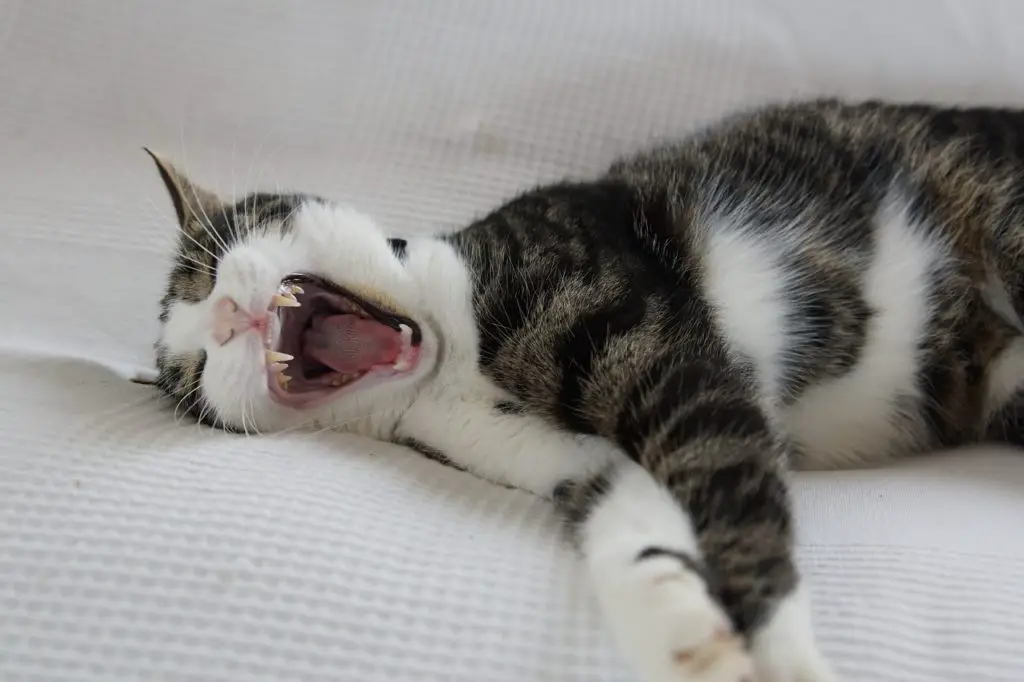
A cat parent can detect a problem with their pet’s chompers by checking their cat’s breath, looking for red or swollen gums, yellow deposits or pus on their teeth, and watching to see if their cat drools or paws at their face. If infected, the bacteria can ultimately invade the blood stream and lead to damaging consequences to your cat’s kidneys, heart, liver and other organs.
A proper and thorough home dental care routine will go a long way to preserving your cat’s teeth and maintaining his overall health. Following are a few notable feline dental facts:
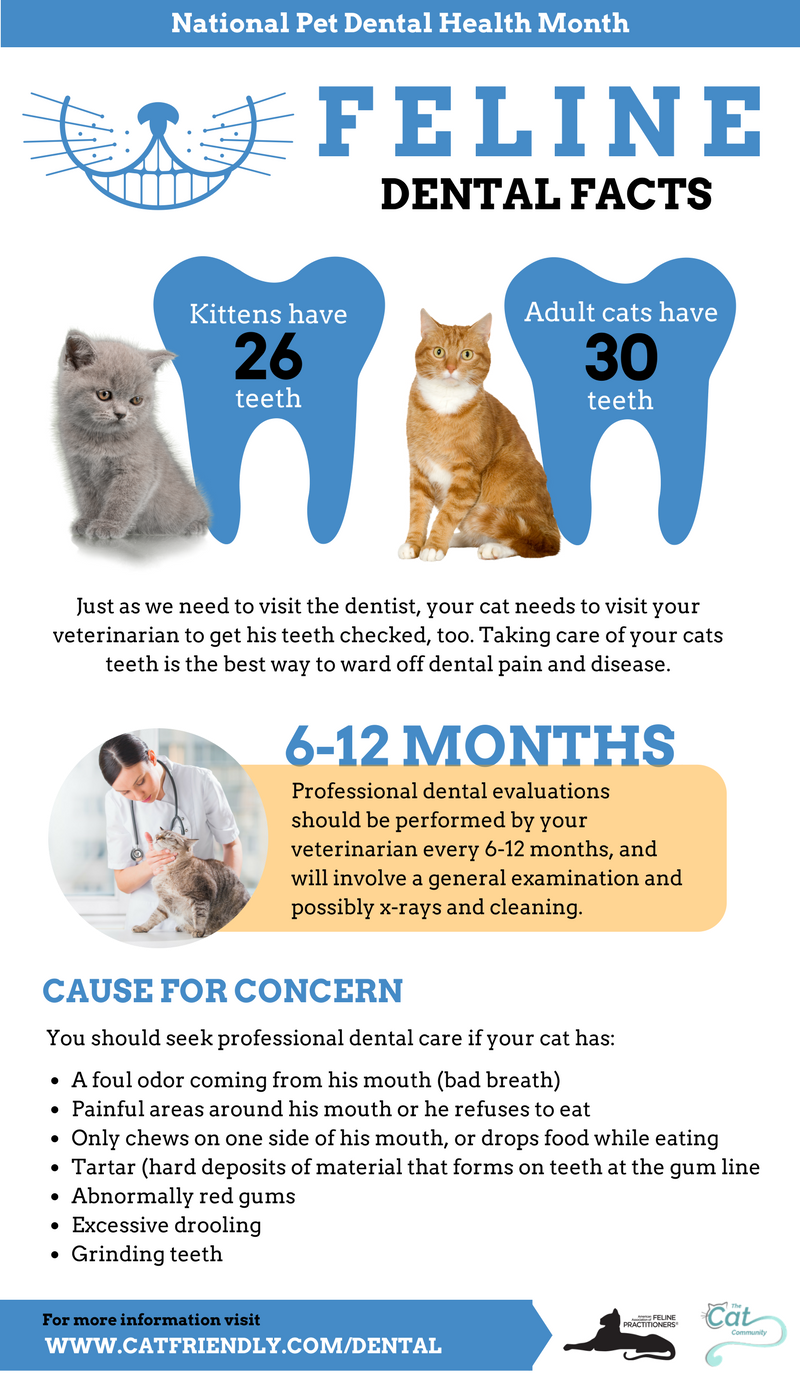
Credit: Infographic courtesy of the American Association of Feline Practitioners
Cats are meticulous self-groomers, cleaning every patch from whisker to tail, but their dental health requires a human hand.
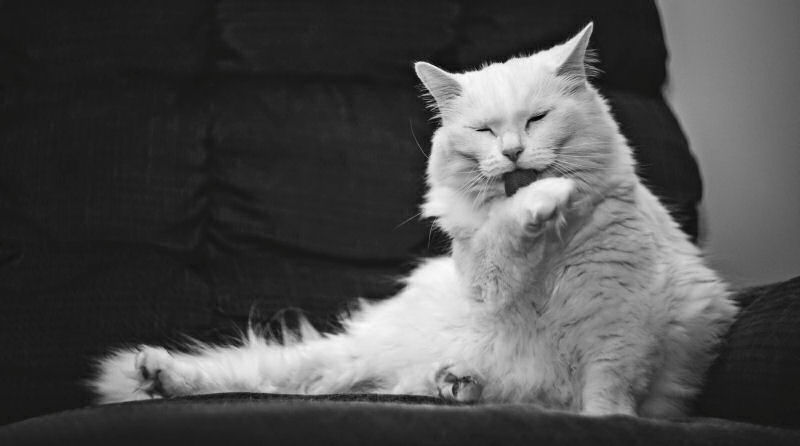
Here’s what you can do for them at home between vet visits:
1. Brush Their Teeth
Brushing is best and we cat parents should regularly brush our fur babies’ teeth, but let’s be realistic. If they didn’t get started at a young age, a lot of cats simply won’t allow it. Don’t get carried away and come at your adult cat with toothbrush and toothpaste in a single day. Work up to it. Start by touching your cat around the mouth while you cuddle him. Gently pull up his lip to look at his teeth and touch a tooth. Go gently from there.
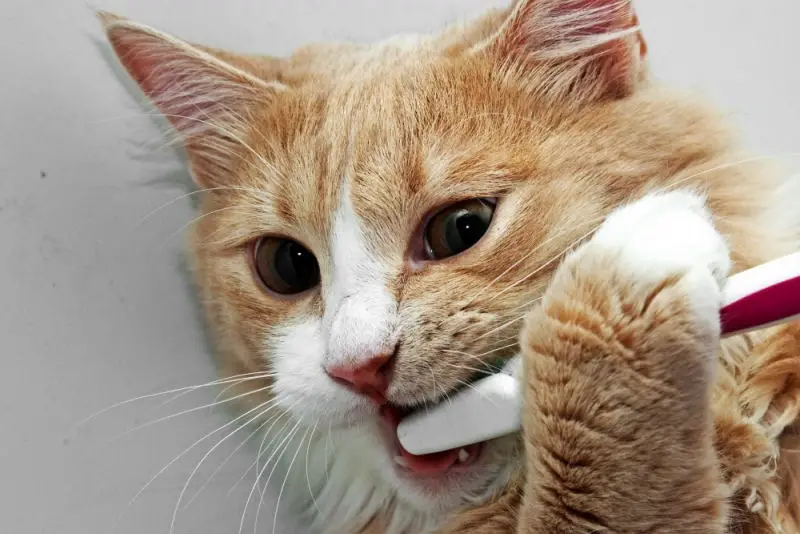
Try to work up to brushing once, twice or, ideally, three times a week. If a toothbrush scares your cat, you can get nearly the same result by wiping his teeth with a gauze pad or dental wipe from your local pet store.
Caution: Always be sure to use a toothpaste formulated for cats and never use a human toothpaste. These are some quality and reputable oral care kits: SENTRY Petrodex Dental Kit for Cats, Nylabone Advanced Oral Care Dental Kit or the Virbac C.E.T. Oral Hygiene Kit.
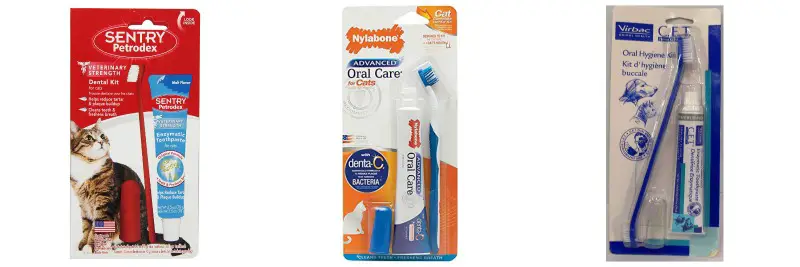
2. Choose a High Quality Dental Friendly Food
Your vet may also recommend a dental formula food. These have larger-than-average “nuggets” designed to reduce plaque and tartar through chewing. We suggest Royal Canin’s Feline Dental Dry food which is a complete and balanced cat food that provides precise nutrition for adult cats. This diet helps control plaque and tartar with kibbles designed to promote chewing. The texture and shape of the kibble produce a gentle abrasive effect on the teeth during chewing. This mechanical action provides a brushing effect to reduce the accumulation of dental plaque and calculus. Kitty will be proud to show off her pearly whites!
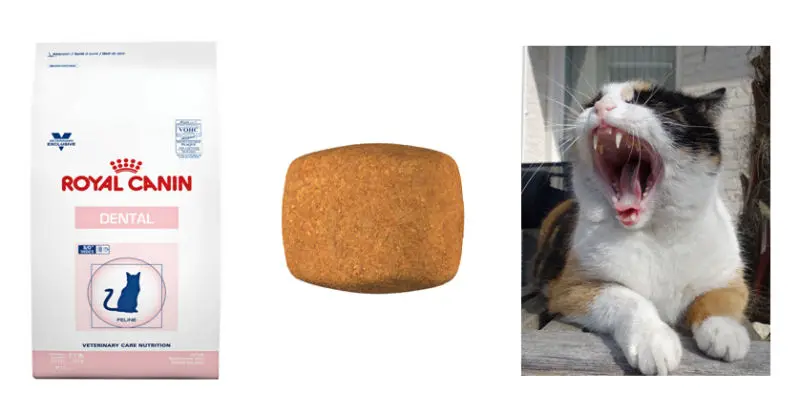
“Cat owners should make it a priority to see their veterinarian annually to ensure a cat’s optimal health,” says Dr. Catherine Lenox, a veterinary nutritionist and Royal Canin Scientific Affairs Manager. “A large contributor to a cat’s health is its nutrition, and Royal Canin offers several diets that provide precise nutrition for various needs. For instance, Royal Canin offers a feline diet specific to cat oral health that can help control plaque and tartar with kibbles designed to promote chewing.”
3. Consider a Dental Rinse
One of the most recent innovations in home dental care is an oral rinse that kills bacteria in your cat’s mouth. Ask your cat’s veterinarian if this might be helpful for your cat — especially if your feline friend turns feisty and refuses to cooperate for brushing. Instead of brushing you apply a simple squirt of dental rinse instead. Oral rinses that contain chlorhexadine gluconate are effective antiseptics that bind to gum tissues and tooth surfaces. They also kill bacteria, reduce plaque and slow the accumulation of tartar. Rinses may be used alone or as a supplement with brushing. Here are three reputable oral rinse products: Premium Pet Dental Spray, Nutri-Vet Breath Fresh Dental Rinse for Cats and Dentahex Oral Rinse Solution.
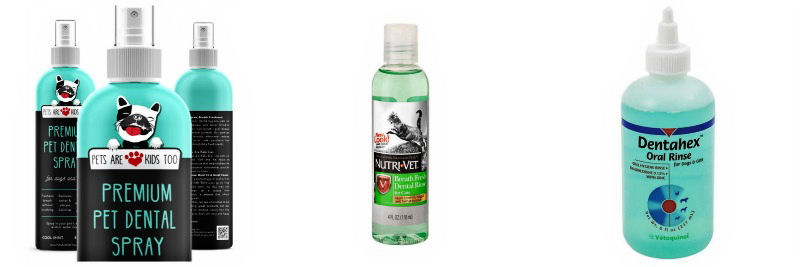
Use only dental rinses and toothpastes that are formulated for cats. Remember that your cat will be swallowing these products, so you want to ensure that they don’t contain foaming detergents and harsh abrasives that human variations include. Those displaying the Veterinary Oral Health Council seal have met standards that are proven to slow the accumulation of plaque and tartar.
4. Let them Play with Dental Balls
Another option is toying around — no kitty can resist playtime so take advantage of it with the toys that yield some medical magic in their mouths. Consider a dental health cat chew toy. These cat chew toys are typically filled with catnip and fibrous catnip stalks to satisfy your cat’s natural desire to crunch and chew. Our cats love the PLAYAY IQ Treat Ball (photo below).
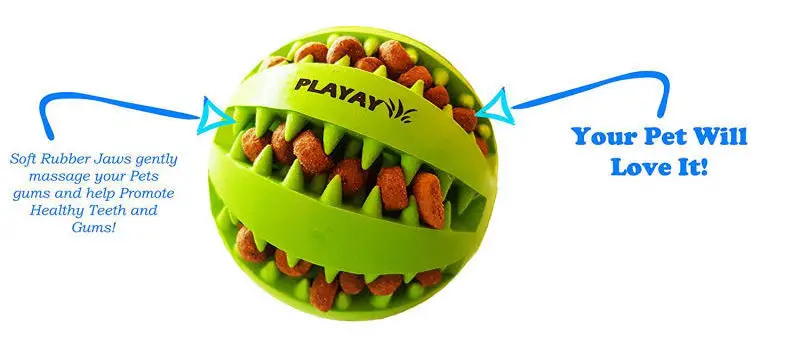
They help clean teeth and massage gums to improve your cats dental health.
* On a side note: Did you hear about the feline dentist of the year? All she received for her work was a little plaque! 😹
February is more than just a call to dental health awareness, it’s also National Cat Health Month and a purrfect reminder to schedule your annual vet visit.
Our pals at the AAFP (American Association of Feline Practitioners) put together the infographic below outlining 5 compelling reasons why you should include routine vet visits for your cat and some feline health tips.
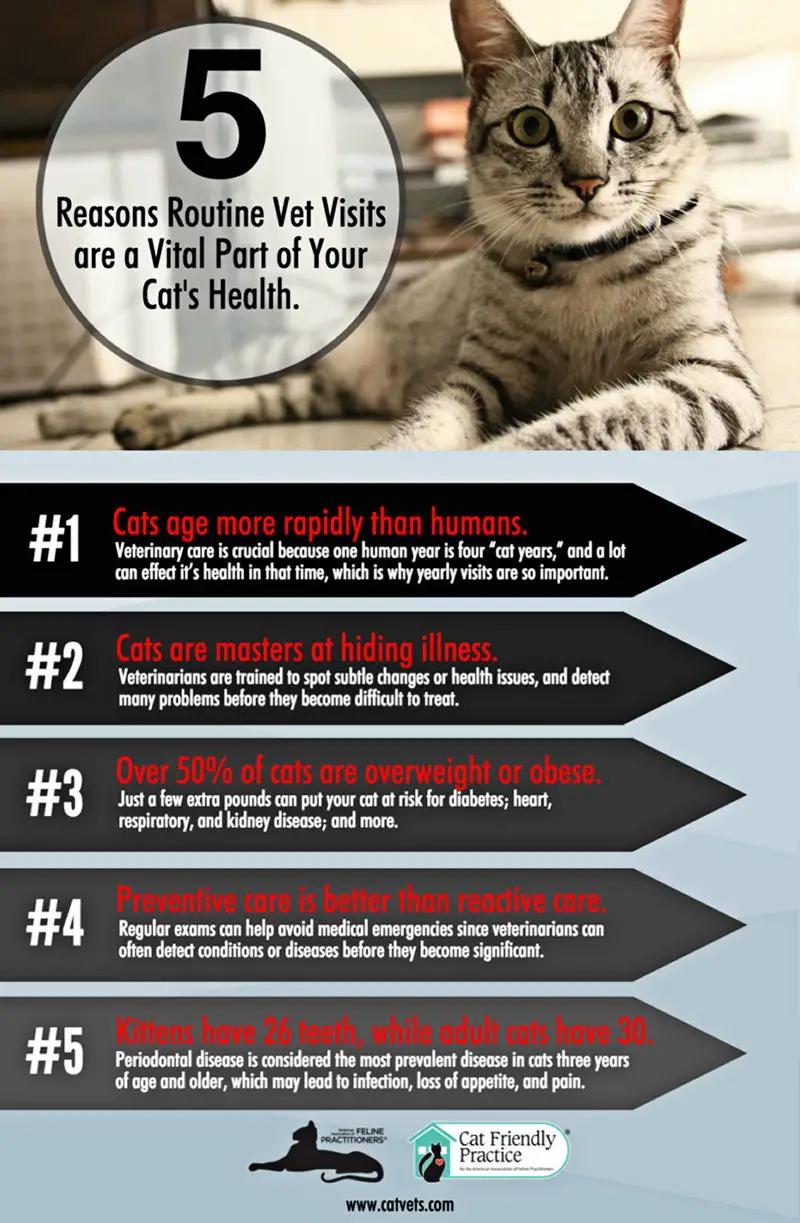
10 Tips for Feline Wellness
1. Make Yearly Vet Visits a Routine — Almost twice as many cats than dogs never visit the veterinarian. Preventive care examinations or check-ups for all cats should occur a minimum of once yearly, and more frequently for senior cats and those with chronic conditions. During the physical examination, veterinarians assess your cats current health, and also can often detect conditions that may affect your cat’s health long before they become significant so they can be managed or cured before they become painful or more costly. Cats need routine veterinary check-ups to promote longer, happier, and healthier lives.
2. Don’t Rely on Google — Any time there is a change with your cat, don’t assume the problem is behavioral – there may be a medical explanation. Don’t rely on Google for answers – contact your veterinarian.
3. Check Weight Periodically — Almost 60% of indoor cats are overweight or obese, which can impact your cat’s quality of life. The addition of just a few pounds can be difficult for owners to detect, yet can have significant health effects and risks. That’s just one reason why a yearly wellness exam with your veterinarian is so important.
4. Create a Comfy Environment — Addressing your cat’s physical, emotional, and environmental needs enhances their health and quality of life. Cats need specific resources to perform their natural behaviors and have control over their social interactions. As owners, we can enhance our cats’ health and wellbeing by ensuring all their needs are met in the home environment. Read more about the 5 pillars of a healthy feline environment.
5. Get the Scoop — Check the litter box. If there has been any behavioral or physical changes to your cat’s elimination, be sure to see your veterinarian. If your cat is vocalizing, missing the box, jumping in/out fast, or not digging at the litter, these may all be signs of a medical issue or aversion to the litter. Be sure to set your cat up for litter box success.
6. “Brush Up” on Your Cat’s Oral Care — (see above) Did you know that periodontal disease is considered the most prevalent disease in cats three years of age and older? If your cat has painful teeth or gums, tartar, gingivitis, or if you’ve noticed a foul odor coming from your cat’s mouth, their teeth should be professionally cleaned before you begin a home-care routine. Discuss tooth brushing or a home-care routine with your veterinarian.
7. Give Your Cat the Best & Visit a CFP — Commit to giving your cat the very best in feline health care and visit a Cat Friendly Practice (CFP). CFPs have made a commitment to decrease stress associated with the visit and provide a more calming environment. They have taken extra steps to assure they understand a cat’s unique needs and utilize feline-friendly handling in order to increase the quality of care for your cat.
8. It’s Okay to be Picky, But Not TOO Picky — Some cats are particular, but many times there may be a medical explanation for any new erratic eating behaviors (unless the cat has always been this way). The issue could be a gastrointestinal problem, diabetes, or any number of other problems – don’t wait, contact your veterinarian. If your cat has gone without food for 24 hours or more, contact your veterinarian IMMEDIATELY.
9. Watch For Changes in Sleeping Habits — Vocalizing and/or sleeping when your cat typically wouldn’t (changes such as pacing and “talking” overnight, or sleeping more during the day) combined with general confusion and/or personality changes (previously outgoing cat becomes a “wallflower”) can be signs of a medical issue such as feline cognitive dysfunction syndrome (“Kitty Alzheimer’s”) in an older cat. Contact your veterinarian right away.
10. Take the Stress out of Vet Visits — 58% of cat owners say their cat hates going to the vet. Make trips to the vet less stressful on you and your kitty by visiting a Cat Friendly Practice. CFP designated practices have taken major steps to create a more calming environment for cats. Stress associated with vet visits starts at home. Don’t forget to acclimate your cat to its carrier by making it a familiar place.
Summary
While February is National Pet Dental Health Month, dental health should be a daily ritual for cat owners all year long. Drop us a comment in the “Leave a Reply” box below or better yet email us a photo of your cats’ pearly whites!
